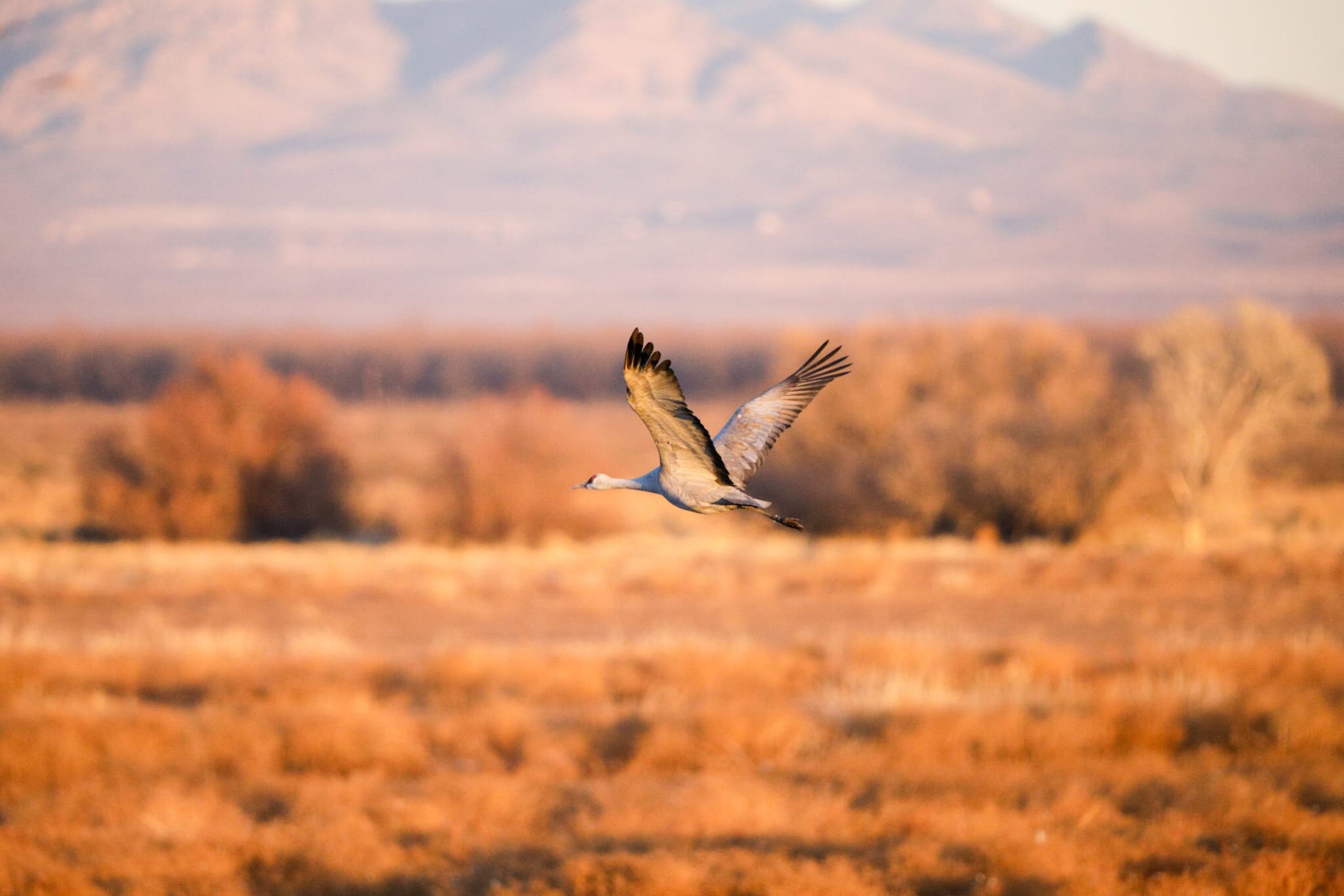The sandhill crane is a striking bird, standing more than a yard tall while boasting a wingspan of over 6 feet! These wings preform heavy duty work with the elegant bird being known for its long migrations of over 10,000 miles from the breeding grounds in the northern American territories and parts of Siberia, into the southern territory of the US. Though an exact number of years we’ve welcomed them into Arizona is unknown, the earliest known fossil of this species dates back to 2.5 million years ago!
February marks a significant point in the sandhill crane migration for us. The annual pilgrimage highlights the adaptability and resilience of the of the species as well as the importance of the Sonoran eco system. The Sonoran Desert, with its vast open spaces, wetlands and mild winter temperatures, provides an ideal resting place for our two-winged world travelers. By February, these birds have traveled areas of the San Pedro River, Sonoran Desert National Monument and Buenos Aires National Wildlife refuge for vital resources like water, food and safe roosting sites for the cranes to regain their strength before migrating northward.
The sandhill crane presence within our Sonoran Desert is not only a spectacle for birdwatchers and nature enthusiasts but also serves an important ecological role. These cranes are opportunistic feeders, eating a variety of grains, plants, seeds and small animals which helps to manage vegetation and support the delicate desert ecosystem. Their migratory behavior draws favorable attention to the importance of preserving desert habitant, including wetlands and grasslands. In recent years, a large portion of these lands has been lost to precipitation change, overgrazing, development and agricultural expansion. A rapid decline in grassland ecosystems has been shown globally, reducing clean water access & flood control while increasing drought, wildfire and climate change.
The arrival of the sandhill cranes in February also signifies the coming of spring in the desert. Their dramatic, choreographed mating dances and elaborate calls add an element of life and sound to the otherwise quiet landscape. These birds, with their stately presence and graceful flight, offer a reminder of the power of migration and the interconnectedness of ecosystems across vast distances. It is a time when the harshness of the desert winter is softened by the arrival of such majestic creatures, symbolizing both the resilience of nature and the beauty of seasonal change.
Where to view:
- Whitewater Draw Wildlife Area, located northeast of Douglas, Arizona.
- Willcox Playa
- LakeApache Station
DID YOU KNOW a sandhill crane can live for up to 30 years?! Some of these cranes have been known to live to 37 years old.
DAILY MASS LIFT-OFF -> 0720-0725am in February.
Sandhill cranes gather in large numbers and usually partake in a mass lift-off right around sunrise. They feed in nearby agricultural fields and tend to return around noon.

